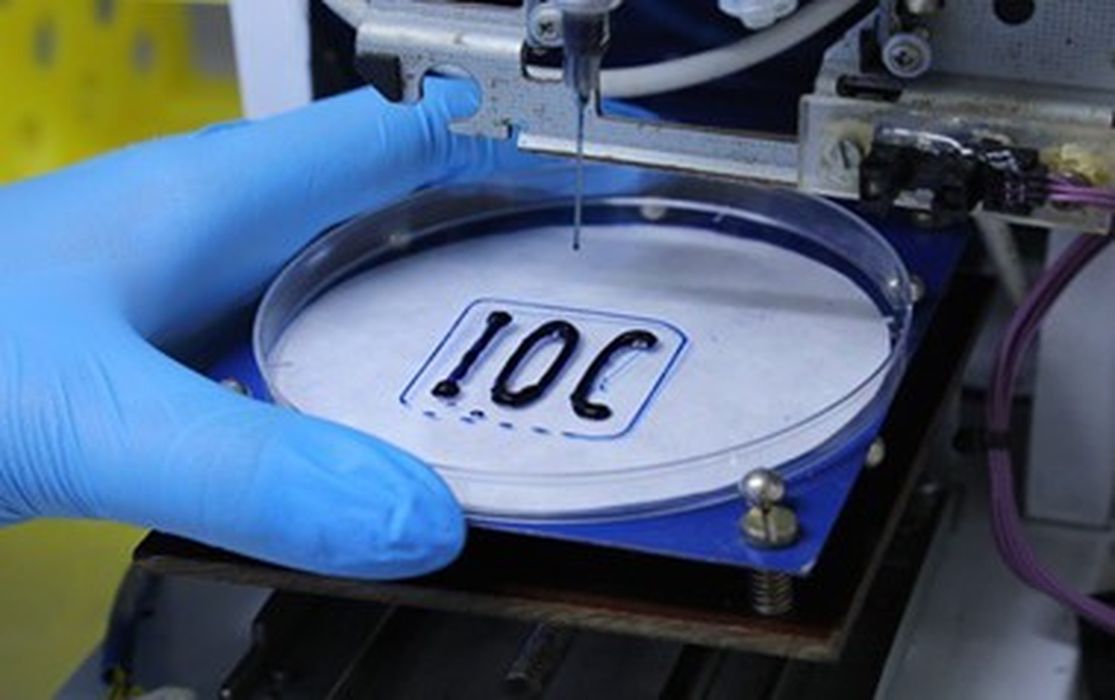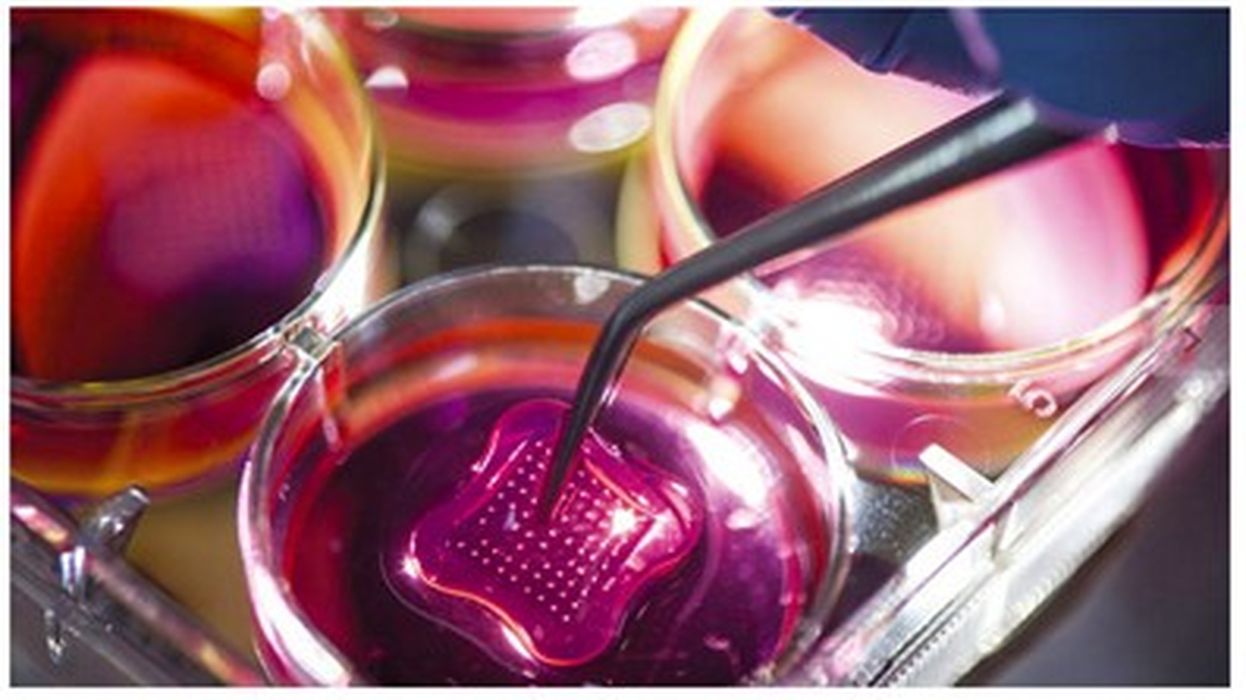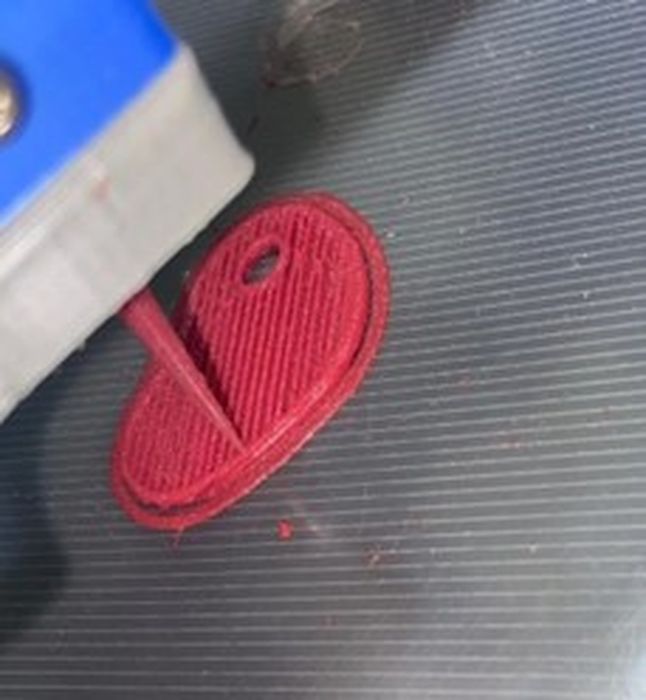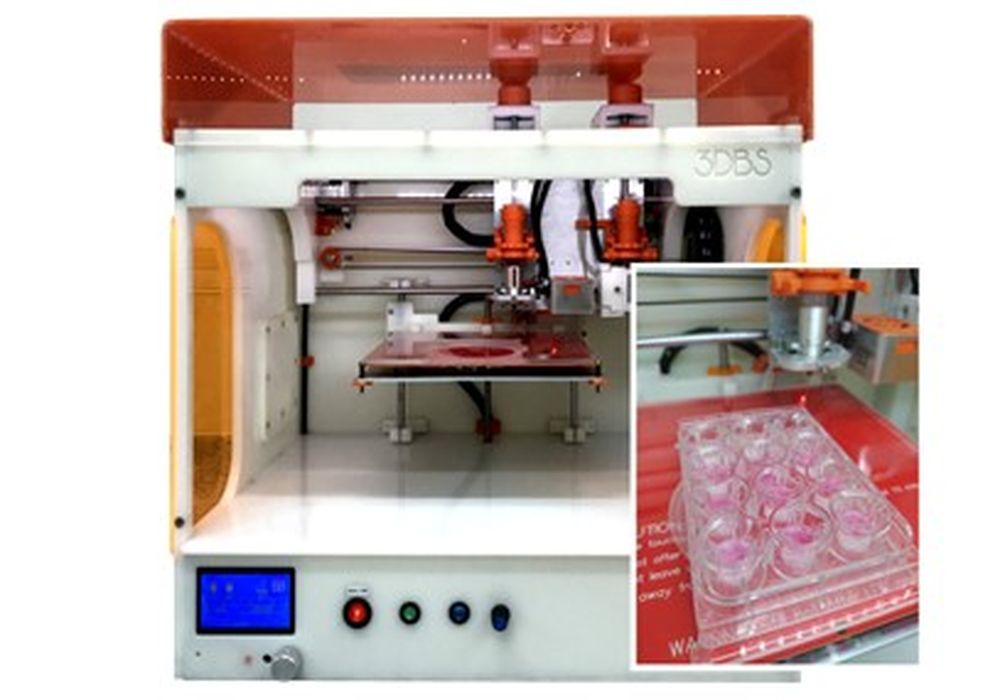
Charles R. Goulding and Andressa Bonafe highlight Brazil’s groundbreaking advancements in 3D bioprinting, from low-cost innovations to pioneering applications in medicine and sustainability.
3D bioprinting is an advanced technology that uses living cells and biomaterials to create three-dimensional tissues and organs. This revolutionary approach finds applications in areas such as regenerative medicine, biomedical research, cosmetics development, and even food production. According to estimates, the global 3D bioprinting market is expected to grow significantly, reaching a market value of more than US$ 5.3 billion by 2030, driven by the demand for alternatives to animal testing and the need for innovation in medical treatments. The technology allows complex biological structures to be reproduced with precision, paving the way for scientific advances and more sustainable solutions.
In recent months, we have presented important developments related to the 3D bioprinting landscape, from the groundbreaking work of Agile BioFoundry and Rice University to the acquisition of the Canadian company Aspect Biosystems. We discussed the potential of bioprinting in research on traumatic brain injuries and the development of new drugs. We also published two international interviews with Brazilian researcher Bruna Alice Gomes de Melo and with the CEO of the Lithuanian company Vital3D, Vidmantas Šakalys. Today we continue our exploration of recent advancements in the field, providing an overview of important initiatives carried out in Brazil.
Democratization of bioprinting
The Oswaldo Cruz Foundation (Fiocruz) is one of Brazil’s leading scientific institutions, internationally recognized for its role in developing research and technologies in the area of public health. Researchers from the Oswaldo Cruz Institute (IOC/Fiocruz), in partnership with Veiga de Almeida University (UVA), created a low-cost, open-source 3D bioprinting technology.
The project has great commercial and social potential, especially because it offers an affordable alternative to the traditional bioprinting market. While prices for conventional models range from US$13,000 to US$300,000, the alternative developed by Fiocruz costs less than US$200. This significant difference is possible thanks to the use of recycled materials and affordable electronic components. The potential for democratizing access is also present in the adoption of the open-source hardware approach. The researchers used open-source methodologies and published step-by-step instructions for building the bioprinter in an open repository, which paves the way for research groups with limited resources to use the technology. In addition to being affordable, the equipment has demonstrated high efficiency, with the cells in the bioink remaining viable for more than seven days after printing, enough time for various experiments and even medical procedures. To date, two models have been produced, with the most recent being used in research aimed at producing mini-livers for transplants, highlighting the promising impact of this innovation in the field of health and biomedical research.
Mesenchymal stem cell research
Researchers at the State University of Rio de Janeiro (UERJ) are using 3D bioprinting in innovative studies with mesenchymal stem cells, exploring the therapeutic potential of their secreted proteins, known as secretome. These cells have been investigated in animal models to treat conditions such as cirrhosis of the liver and acute lung injuries, demonstrating efficacy in reducing inflammation, regenerating tissues, and improving systemic markers, such as cytokines and liver enzymes. The research, which began during the COVID-19 pandemic, shows promising results, pointing to applications that can benefit patients with multiple comorbidities and contribute to the preparation for public health challenges related to new zoonotic diseases.
The UERJ project stands out for the development of innovative bioinks, which combine mesenchymal stem cells and biocompatible biomolecules in hydrogels, allowing for the creation of bioprinted structures with high therapeutic potential. The bioink is formulated to maximize cell viability and promote large-scale secretome production, which is essential for regenerative applications. The study utilizes a thermally regulated platform, ensuring ideal conditions during the printing process and hydrogel polymerization, which results in stable molds for cell maintenance. This approach allows the creation of customized and optimized biological materials that can be used for more effective treatments in concomitant diseases, such as liver fibrosis and acute lung injury. With these advances, the project not only expands the frontiers of regenerative medicine, but also positions UERJ as a global reference in the use of bioprinting for innovative therapies.

Cosmetics testing
Since 2019, Natura, one of the largest Brazilian cosmetics companies, and the University of São Paulo (USP) have established a pioneering partnership to create artificial skin through 3D bioprinting. This advance allows the development of ethical and sustainable methods for cosmetics testing, eliminating the need for animal experiments. The research uses bioinks formed by cells and biomaterials, applied layer by layer to build tissues that simulate the human epidermis and dermis. In addition to replicating functional aspects of the skin, such as barrier and cell regeneration, the technology reduces costs and accelerates product development.
The research is carried out in conjunction with the Institute of Biomedical Sciences at USP, which contributes scientific expertise to optimize the printing conditions and composition of the bioprinted tissues. The collaboration reinforces Natura’s commitment to innovation and sustainability, in line with global regulatory trends that encourage alternative methods to animal testing.
Innovative Startups
BioEdTech is an innovative Brazilian company that focuses on 3D bioprinting research, development, and technological training. With the goal of democratizing access to biotechnological solutions, the company offers modular and customizable bioprinting systems, as well as courses that range from the construction of bioprinters to advanced applications. Its products include bioprinters, 3D cell cultures, and bioprinted foods, such as alternatives to traditional meat (as we have previously covered in our previous articles on Fabbaloo). The company also develops sustainable technologies for cosmetics and other industries. BioEdTech promotes a collaborative ecosystem, integrating companies and research institutions to meet emerging biotechnological demands. With more than 400 hours of classes offered and pioneering technologies, the company positions itself as a reference in biofabrication, contributing to advances in health, sustainability, and technological education in Brazil.

3DBS is also an innovative Brazilian startup that has played an important role in shaping the future of regenerative medicine in the country. Its operations include the development of in-vitro models, such as bioprinted skin, intestinal barriers, and liver spheroids, which replace the use of animals in safety and efficacy testing for cosmetics, medicines, and food. Using advanced technologies such as 3D bioprinting and electrospinning, the company also creates customized scaffolds and bioprinters adapted to the specific demands of its customers, promoting sustainable and ethical solutions for biomedical research.
Inspired by natural structures, 3DBS is a reference in biofabrication of biomimetic tissues, combining technological innovation with practical applications in tissue engineering. The company develops equipment and provides biofabrication services, contributing to the creation of alternative models that support functional research and reduce environmental impacts. 3DBS believes in collaboration and joint advancement as pillars to transform regenerative medicine, opening new horizons for scientific and clinical applications.

The Research & Development Tax Credit
The now permanent Research and Development (R&D) Tax Credit is available for companies developing new or improved products, processes and/or software.
3D printing can help boost a company’s R&D Tax Credits. Wages for technical employees creating, testing and revising 3D printed prototypes are typically eligible expenses toward the R&D Tax Credit. Similarly, when used as a method of improving a process, time spent integrating 3D printing hardware and software can also be an eligible R&D expense. Lastly, when used for modeling and preproduction, the costs of filaments consumed during the development process may also be recovered.
Whether it is used for creating and testing prototypes or for final production, 3D printing is a great indicator that R&D Credit-eligible activities are taking place. Companies implementing this technology at any point should consider taking advantage of R&D Tax Credits.
Conclusion
In Brazil, 3D bioprinting has been adopted in pioneering projects by institutions such as Fiocruz and UERJ, as well as companies such as 3DBS and BioEdTech. Notable examples include the development of affordable bioprinters, as well as the use of innovative bioinks in stem cell therapeutic research. The partnership between Natura and USP also stands out, using bioprinting to create dermal models for cosmetics testing. These projects demonstrate Brazil’s potential to lead initiatives that combine cutting-edge science with accessibility and sustainability.
